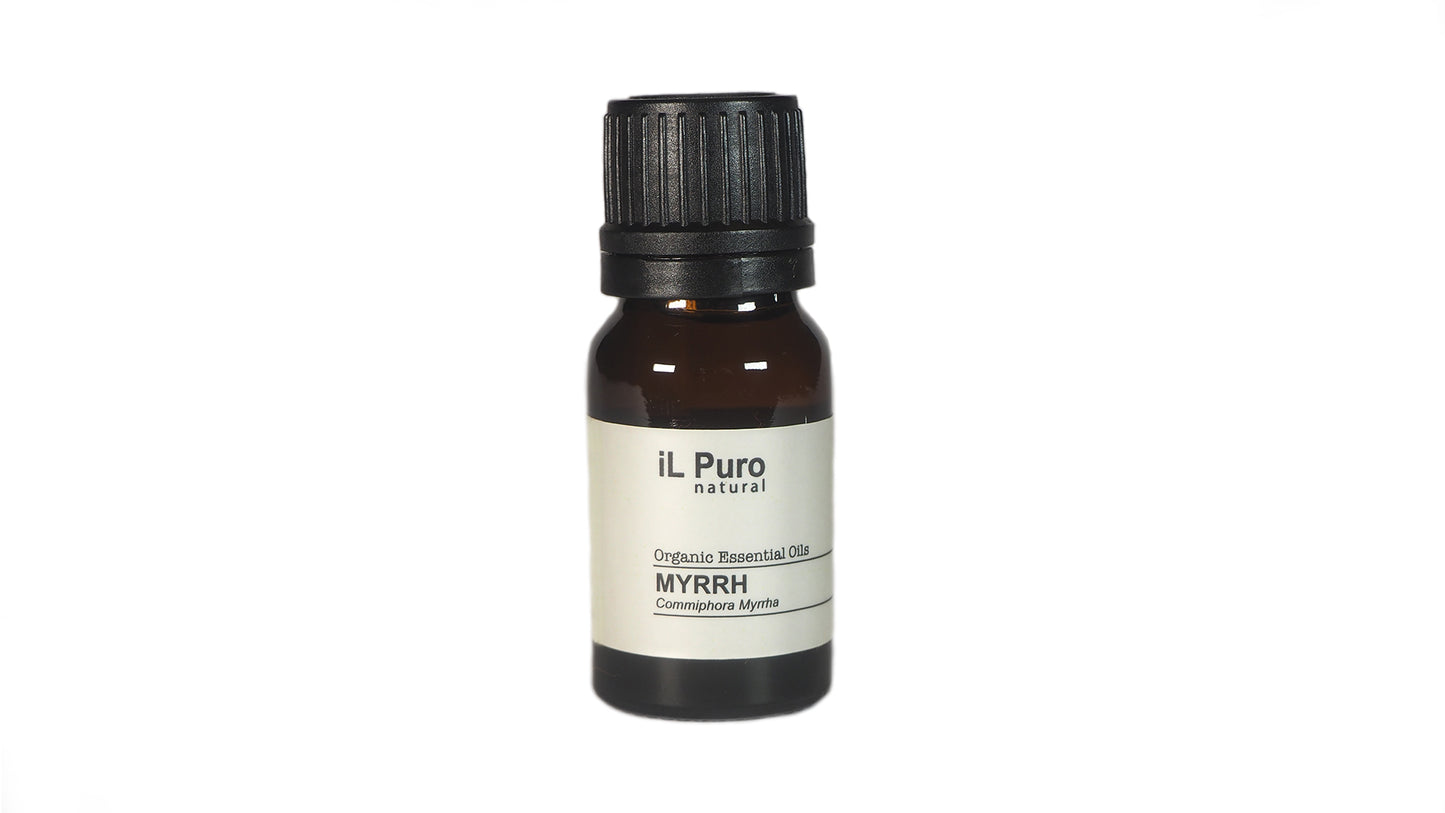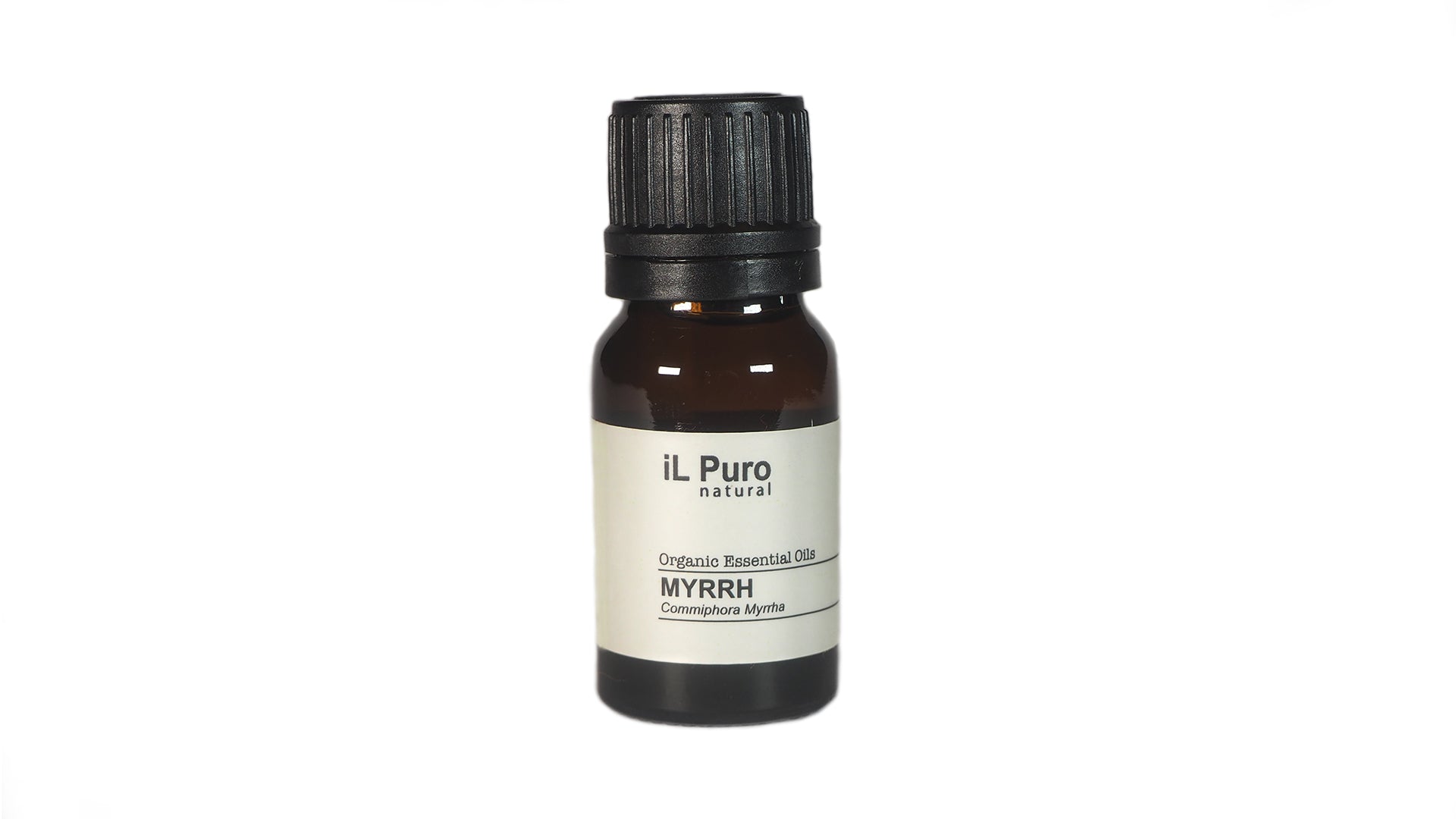iL Puro natural
Couldn't load pickup availability
Commiphora myrrha (organic)
Origin: Somalia
Rejuvenate and earthy. Astringent, toning and soothing for the skin. Blend well with Frankincense, juniper, lavender, patchouli, geranium and spice oils
The Commiphora species which yield myrrh are shrubs or small trees up to meters high. They have sturdy knotted branches, trifoliate aromatic leaves and small white flowers. The trunk exudes a natural oleoresin, a pale yellow liquid which hardens into reddish-brown tears, known as myrrh. The native collectors make incisions in the bark of the tree to increase the yield.
Herbal/Folk Tradition: Myrrh has been employed since the earliest time in Eastern and Western medicine, its use is mentioned some 3700 years ago. The ancient Egyptians used it for embalming purposes and in their perfumes and cosmetics. In China it is used for arthritis, menstrual problems, sores and hemorrhoids. In the West it is considered to have an 'opening, heating, drying nature' (Joseph Miller), good for asthma, coughs, common cold catarrh, sore throat, weak gums and teeth, ulcers and sores. It has also been to treat leprosy.
Aromatherapy/Home Use:
Skin care - Athlete's foot, chapped and cracked skin, gum infections, gingivitis, catarrh, coughs, mouth ulcers, sore throat, voice loss.
Digestive system - Diarrhea, dyspepsia, flatulence, hemorrhoids, loss of appetite.
Genito-urinary System - Amenorrhoea, leucorrhoea, pruritis, thrush.
Immune system - Colds.
Other uses: The oil, resinoid and tincture are used in pharmaceutical products, including mouthwashes, gargles and toothpaste; also used fixatives and fragrance components in soaps. detergents, cosmetics and perfumes, especially oriental types and heavy floras. Used as flavor ingredients in most major food categories, alcoholic and soft drinks.
Materials
Materials
Dimensions
Dimensions
Care information
Care information


